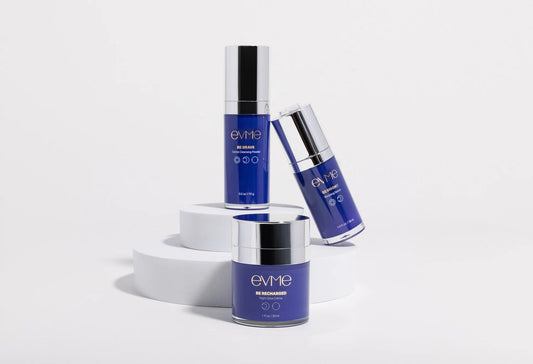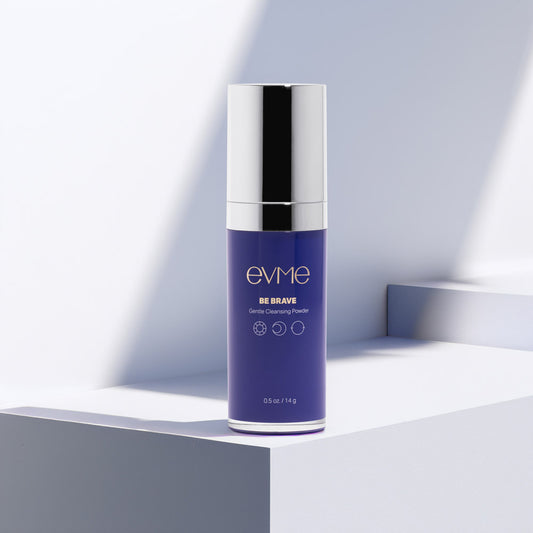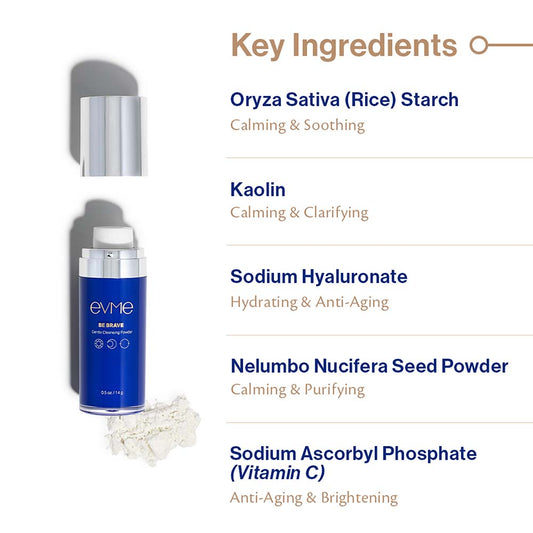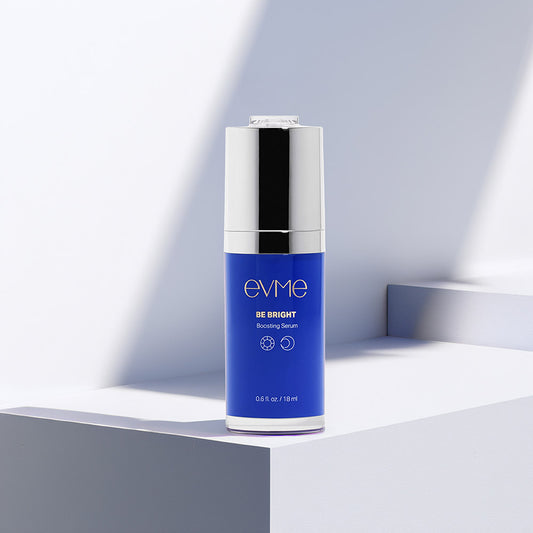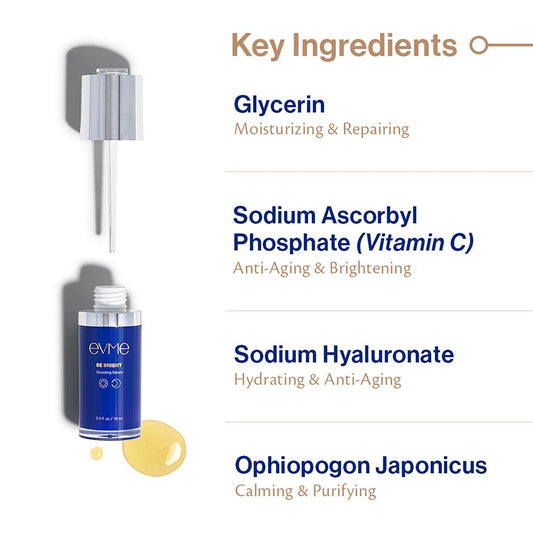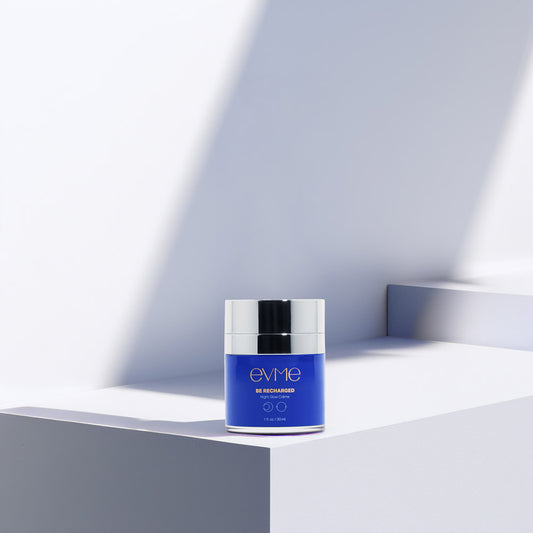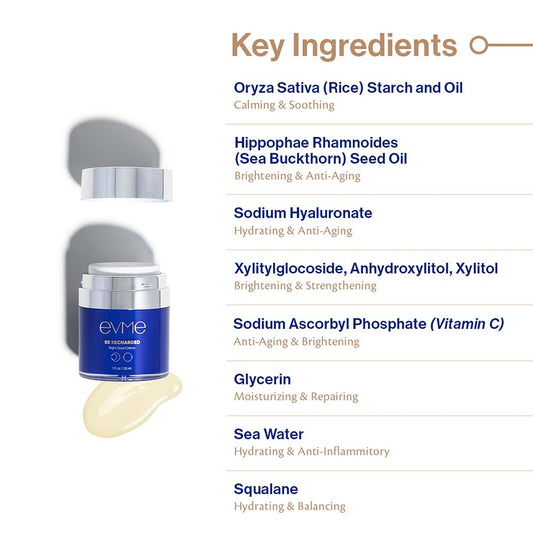Try Evme, allergist-created luxe skincare for sensitive and allergic skin.
Shop All ProductsContact Dermatitis: Irritants vs. Allergies
October 12, 2022
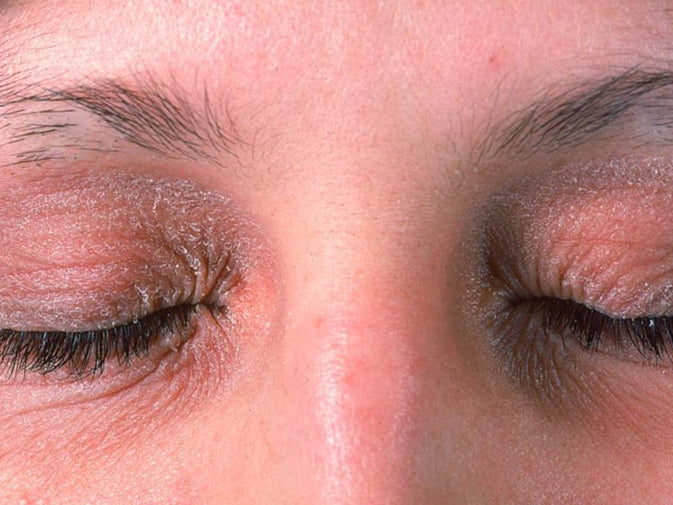
When you experience skin discomfort from contact with an irritant or allergen, aka Contact Dermatitis, there may be many thoughts going through your head. The main thing you probably want to know is how to make it feel better or go away. This often involves determining what could be causing the dermatitis — as well as establishing if it’s a true allergic reaction or a reaction to an irritant.
So, how can you tell the difference — without playing Google detective or going to medical school?
Dr. Anjuli, your skin allergist, is here to help.
As an allergist and immunologist, I’m on a mission to teach you all you need to know about why your skin is reacting. Today, I will explain the differences between the two forms of contact dermatitis, irritant and allergic contact dermatitis, and why I think it’s important to know the difference.
Understanding Contact Dermatitis
Luckily, contact dermatitis isn’t contagious, so it can’t spread to those around you. However, after seeing so many patients deal with this and after also experiencing it myself, I realize how uncomfortable it can be.
It can be really helpful to know whether a product is causing an irritant reaction or an allergic reaction. Irritant and allergic reactions are typically caused by different reactors and the two types of reactions tend to have slightly different courses. We’ll get more into this later, but having insight into what could be causing your reaction, what to expect from the reaction itself, and how to avoid it in the future can be valuable, and also prevent a repeat occurrence.
Before we begin, it’s important to understand that the terms “contact dermatitis” and “eczema” are often confused.
To clarify:
“Dermatitis” refers to inflammation of the skin. It’s a very general term used to describe a rash. The word dermatitis does not imply any specific root cause. “Contact Dermatitis” specifically describes a reactive condition where a topical agent has caused inflammation in the skin by creating a reaction.
Eczema refers to a specific type of inflamed skin, potentially associated with allergies, but typically exacerbated by an impaired skin barrier, often characterized by dryness, itching, and a scaly rash.
What Is Irritant Contact Dermatitis?
This is the most common type of contact dermatitis. Think of irritant contact dermatitis as a type of rapidly-formed reaction someone with sensitive skin might have to ingredients in products directly applied to their skin. It is typically caused by a type of skin injury, created by a variety of factors.
What Are the Causes of Irritant Contact Dermatitis?
- Chemical agents like detergents, basic or acidic solutions, organic solvents, or other caustic agents like acetone nail polish remover
- Physical agents like UV radiation, lasers, heat, cold, or other mechanical factors
- Certain Foods such as fruit acids, which can be irritating to the skin.
- Airborne irritants like fumes or smoke
Irritant Contact Dermatitis: What Happens to Your Skin?
Irritant contact dermatitis presents itself in the following ways:
- Mild reaction causing red, dry, bumpy, and possibly hot skin
- Reaction starts soon after application of irritant
- Reaction tends to be limited to areas of the skin that have made contact with the presumed irritant
What Makes Allergic Contact Dermatitis Different?
Irritant contact dermatitis and allergic contact dermatitis both produce an inflammatory reaction in your skin.
The inflammation caused by allergic contact dermatitis, however, is induced by your immune system, specifically T cells, which are a type of white blood cell we have in our bodies. With this specific immune response, the allergic reaction is delayed — often occurring at least 2-3 days after the initial exposure.
Common Allergens That Cause Allergic Contact Dermatitis Include:
- Nickel used in jewelry, belt buckles, zippers, and so much more!
- Fragrances: Both synthetic and natural fragrances can cause reactions, including essential oils.
- Preservatives: Many preservatives are capable of causing reactions. Formaldehyde, formaldehyde releasing agents, and isothiazolinones are a few types of preservatives found in many cosmetic and personal care products.
- Airborne allergens such as pollen
- Plants such as poison oak/poison ivy
- Medications such as antibiotic creams like neosporin or polysporin
- “Chemical” sunscreens such as Benzophenones — oxybenzone and avobenzone in particular — are common reactors in sunscreens.
Allergic Contact Dermatitis Can:
- Start locally and spread: The reaction may start locally where the allergen has touched the skin, but it may also have the possibility to spread to other areas of the body and be more severe.
- Worsen upon repeated exposure: These immune cells also have good memory, so if you become exposed to the same allergen again in the future, the inflammatory response may become initiated again — but it has the potential to be worse the second time around! It can start out as dry, red bumps, but has the potential to progress to a worsened state with more redness, fluid-filled bumps, and possibly even crusting and oozing.
- Develop within hours and can last for several weeks to months after exposure to allergens such as nickel, fragrances, preservatives, dyes, latex, and adhesives.
How to Avoid Irritant and Allergic Triggers
I hope this helps clear up the differences between irritant and allergic contact dermatitis. I know it can be challenging to avoid all of the culprits that cause contact dermatitis, but here are some of the best ways to do this:
- Steer clear of the substances you recognize. Read labels and make sure you know what you might be exposed to.
- Wear protective clothing and gloves to shield you from irritating substances like household cleaners.
- Use moisturizer on your face and body regularly to help restore your skin’s outermost layer (which serves as a barrier to many contaminants).
Let’s face it: Both irritant and allergic contact dermatitis can cause discomfort. However, appreciating their differences helps us to narrow down the causes, understand the natural course of the reaction to properly treat it, and keep it from occurring again!
I hope you’ve enjoyed learning a bit more detail about contact dermatitis!
Recommended articles
Evme Sans-Allergenic Skincare Products
- Choosing a selection results in a full page refresh.






